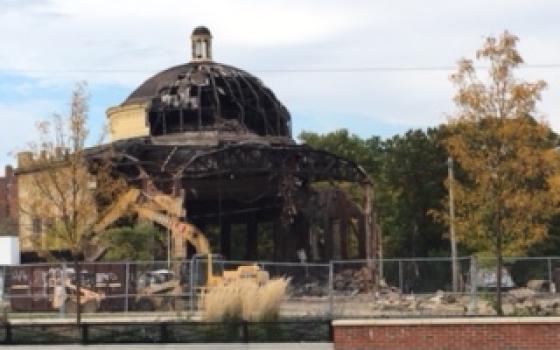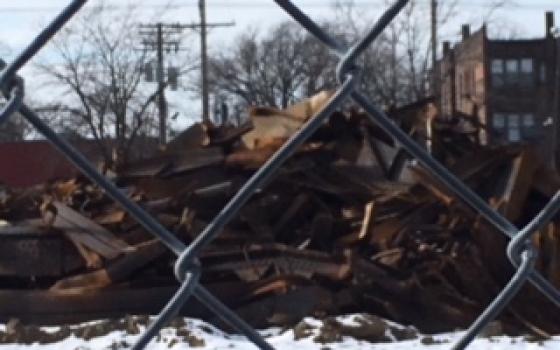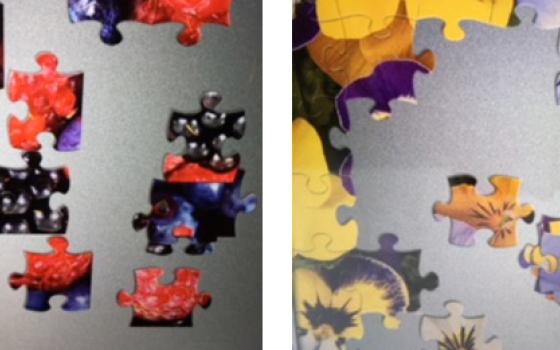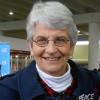Recent congregational meetings on the aging process, conversations with religious women friends, the loss of lifetime friends and relatives through death and dementia, my recent 70th birthday, and the current political climate in my country have all conspired to focus my attention on the spirituality of loss.
Television commercials broadcast the benefits of modern medicine to keep us "younger longer." Spiritual exhortations challenge us to use our remaining years to share our wisdom. But these losses are inescapable because they threaten my basic identity as a Catholic Christian, an Ursuline sister and as a United States citizen.
In the light of these losses, I ask the personal question, "Who am I now?" and the communal question, "Who are we now?" I search for meaning through a new personal and communal spiritual language as American women religious close ministerial institutions and motherhouses.
The religious landscape of United States culture is barely recognizable to those of us who learned religious life in these motherhouses, received our education in these schools and were healed in these hospitals.
As Thomas Moore discusses in Care For the Soul, places and buildings connect us to memories and meanings, to our very souls. Although institutions are limited in their functions, they also served to provide a locus of meaning wherein women religious themselves — together with the People of God — learned, cultivated and lived a personal and communal spiritual life.
Grief counselors remind us that in order to achieve a renewed sense of meaning and purpose after loss, thinking about loss is an incomplete response; grief must be felt and experienced. I seem to have a facility in thinking and discussing grief and loss, but I find it difficult to take the time to mourn with real tears the depth of loss I am experiencing. As the slogan goes: "You have to feel it to heal it."
In my search for healing images which connect to my own experience of loss and destruction, I have found that I cannot determine what will speak to my soul. The psalms of lament and the prophets of the Hebrew Scriptures are helpful. Also, everyday images unexpectedly grab my attention and eventually, my heart and soul. These images are my steps on the path of healing because they connect me to my feelings and speak to my soul. Two recent examples are a demolition site and a jigsaw puzzle.
As a reading tutor at Urban Community School, I occasionally drive to and from school on Lake Road. One day, while stopped at a traffic light at West 117th and Lake Road, I noticed a bulldozer next to the First Church of Christ Scientist, a massive, uniquely designed, neoclassical, octagonal temple — a landmark in Cleveland for over ninety years.
The church, built of sandstone and marble, appeared indestructible. I was shocked to see the bulldozer and could not make sense of the two images. After a quick Internet search, I discovered that the church had stood vacant from 1989-2016.
Every day I found myself taking the route past the church to check on the process of demolition. Almost every day there were new and different pieces of heavy construction equipment: cranes, bulldozers and wrecking balls. Crime tape suddenly surrounded the building site to protect pedestrians who might be injured by flying debris.
Months passed, the building was finally demolished, and an enormous hole was visible. This hole contained foundational stone, brick and cement, which also had to be painstakingly broken apart and removed.
The slow undoing of the solidity and history of this building mesmerized me. Now, I drove to school only on the route that took me past the demolition, so that I could check on the monthly progress. One day, I parked the car to take photos.
As I walked across the street, I began to ask myself why I was so drawn to this site. I slowly began to realize that the solid, massive construction of this building and its foundation served as a mirror of my feelings; it was an outward manifestation of my inner experience. My daily pilgrimage to the destruction site was helping me to connect with my own feelings of loss.
One day I parked the car, and began to cry for the sources of meaning and life that I had lost: a Vatican II church, a form of religious life that emerged from Vatican II, and a country whose contemporary form of democracy I no longer recognized.
Currently the church site is covered with grass and two new modernistic buildings are being constructed near the site. Without the substantial construction materials of the former church, the new buildings will surely not last as long.
But I have an intact image in my soul of a building and foundation that stood the test of time and provided shelter and a spiritual home for many. And the demolition of that church provided me with the ability to begin to grieve my losses so that I can move on.
I usually begin my morning prayer time by working on an online jigsaw puzzle. I used to consider the puzzle a "game" to relax my stress. However, over time, reflection on the process of puzzle solving has taught me that the puzzle is an important piece of my prayer routine.
I notice that I feel more peaceful when I begin my day by solving the puzzle. Reflecting on this, I realized that when I solve the puzzle, I am bringing an image of a tea set or a landscape into being — an image that is coherent and whole.
One morning, I was having trouble with the puzzle because it was a patchwork quilt of many colors. My usual problem-solving tricks were not working: do the corners and edges first, then find colors that blend. Every piece looked too much like every other piece; nothing was distinctive.
I could not differentiate a pattern or a coherent whole.
I was forced to slow down and look more closely for pattern, color and design. I had to look for details I missed on first perusal. I began to take a closer look for tiny clues of colors on the edges of the pieces. Starting on the margins, looking for small companion pieces that fit as I moved slowly toward the center helped me to complete the puzzle, to find the overall design.
Sometimes I found a loose fit, but not a perfect fit. I experienced trial and error repeatedly. Other times, on a good guess, I got lucky and the piece fit immediately!
This puzzle of the patchwork quilt taught me to slow down, to look more carefully at detail and to reflect that, even if the pieces of my life don't feel like they fit here and now, I have hope that they might fit somewhere, at some other time.
The community of the prophets of the Hebrew Scripture experienced the destruction of Jerusalem and the temple. What sustained them was their relationship with the Living God, as assisted by the Hebrew prophets — who knew the power of public grieving and lament as key "puzzle pieces" to healing.
I can't expect more.
[Beverly Anne LoGrasso, a member of the Cleveland Ursuline Sisters since 1965, has served in education, administration and prison ministry to women. An article on her experience in prison ministry was published in National Catholic Reporter.]




